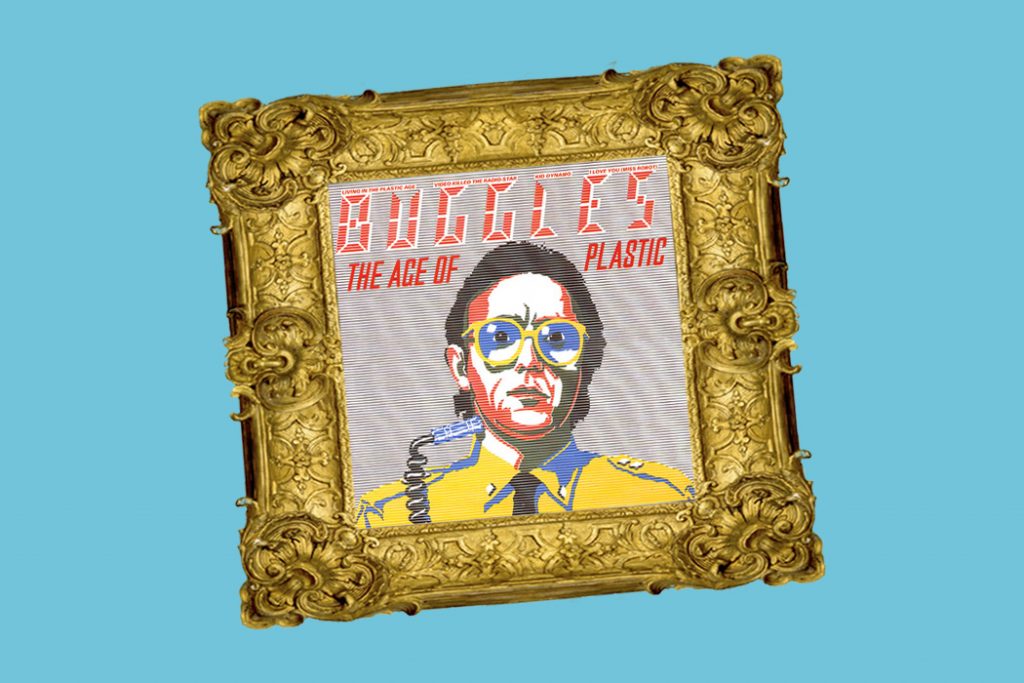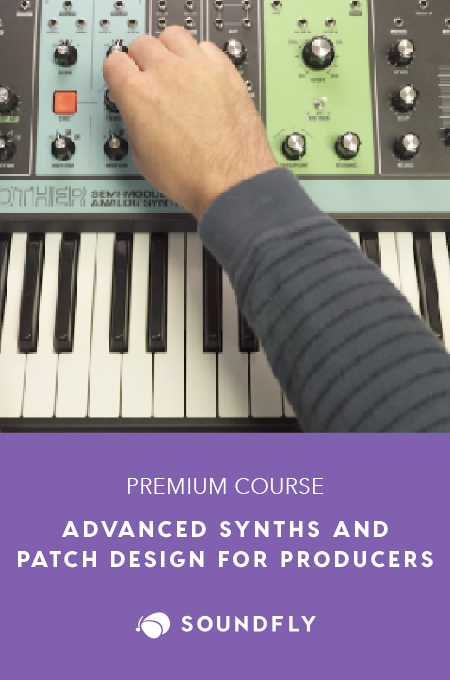
Welcome back to our new series on Flypaper, Album Histories Monthly, which brings you the story of a single album each month, in the month that it was originally released. Last month, we covered Afrika Bambaataa’s Planet Rock. This month:
The Buggles – The Age Of Plastic
Release Date: January 10, 1980
The Buggles became forever associated with MTV when their music video for “Video Killed the Radio Star” was both the inaugural video to launch the network, and their one millionth video shown.
Random factoid: the keyboardist wearing a black jacket in the video is… Hans Zimmer!
For a brief moment in time, The Buggles were the vanguard of the new style of pop music that accepted the trajectory of the genre, rather than simply resigning to the changing times. However, their importance as a pop culture “symbol” has eclipsed the focus on their actual music, leaving many people in the dark when it comes to what they sound like beyond a handful of early hits.
Their first album, The Age of Plastic, is a delightful mix of pop, disco, and electronic music, and worth engaging with from start to finish. It’s a nostalgic, yet forward-looking, album that deserves to be played at house parties, dance clubs, and wherever else people are looking for solid, joyous, upbeat music.
The Lead Up
Songwriting partners Trevor Horn and Geoffrey Downes met in 1976 as part of Tina Charles’ disco-pop backing band. Horn played bass and sang, Downes played keyboard. Horn and Charles briefly dated, and Charles provided the female vocals for many songs on the album that would eventually come together, including “Video Killed the Radio Star.” The Buggles started with an air of sarcasm, as the name plays on the idea of The Beatles and is meant to conjure up the image of bugs that live in a recording studio.
In an interview with The Guardian in 2004, Horn stated that he had been fascinated by technology’s dehumanizing effect on society. Their visionary blending of nostalgia and electronic music is a reflection of this, and accordingly, the inspiration for “Video Killed the Radio Star” was, he said:
“A [JG] Ballard story called ‘Sound Sweep’ in which a boy goes around old buildings with a vacuum cleaner that sucks up sound. I had a feeling that we were reflecting an age in the same way that he was.”
The Recording
Horn’s approach to recording was very unique, and this excited everyone in the studio. He’d set up microphones to capture the kick drum so they could track it by itself, while having the drummer dummy-play the other parts on his knees or hitting towels covering the snare and toms. After that, they’d record the hi-hat, the snare, etc., tracking each individually. It was a completely different way of working than the studio was used to. This isolated drum tracking allowed each drum part to be mixed and EQed one-by-one, giving the feel of the drums a much more modern, almost electronic sound.
Horn’s avant-garde approach to recording was not limited to live drums either. Gary Langan, head engineer on the album, said to Sound on Sound:
“Trevor was also one of the first guys to start fooling around with drum machines. The Roland TR808 — boy, Trevor could make that sing. That was one of the great early tools. We hit it off immediately and that has continued throughout our career.”
The Roland TR808 has been recently re-released and is a hallmark of ’80s big beat, acid house, and early hip-hop music. Horn and Downes had a great ear for recording and took great care over all the aspects of their sound.
“In those days, decisions were made there and then,” said Padgham, “so, if, for example, one of Geoff’s keyboards needed some chorusing and reverb on it, you would record it that way. Whereas today everyone sits around and goes, ‘Well, we could do this or we could do that,’ you made decisions and those decisions then influenced the next process.”
Horn and Downes were searching for a specific sound for their debut album, one that seemed difficult to describe until they were finished. They wanted The Age of Plastic to have an in-your-face sound that grabbed the listener’s attention, but rounded off with Horn’s uniquely fair voice style. “If you listen to that record, the level of the bass drum is just ridiculous,” Langan remarked. He goes on:
“At the same time, the backing vocals are bone dry and panned left and right. The great thing about working with Trevor is that he knows when something is not right. He will keep leading you on and making you jump through hoops, and then, when it is right, he knows when to stop. I’ve always said that working with him is like running a marathon.”
Of course, one of the most distinct aspects of this album’s unique sonic feel is the sound of the vocals. The juxtaposition of Horn’s heavily compressed and clipped vocal tracks and Charles’ almost childlike singing is infectious. It’s bubblegum pop meets robots.
Langan, once again, had this to say: “For his lead vocal on ‘Video [Killed the Radio Star],’ he was looking for something different. In those days, he wasn’t the world’s best singer — like a fine wine, he has improved over the years. So, to help disguise the vocal he wanted a sort of telephone voice, and I therefore sat there for a few hours and put it through some graphics and lots of compression. There were absolutely no dynamics left in it whatsoever by the time it had been recorded, pumped back out through a Vox AC30, and then compressed and EQed again. Beforehand, we’d tried using a bullhorn but it really was harsh — the task was to make the vocal loud without cutting your head off. It still had to retain some softness to it, and it was the AC30 that really gave it that quality.”
The album was a collaboration between band members Downes and Horn, their producer, Gary Langan, and the other vocalists they had guest on the album. While The Buggles are often seen as a one-hit wonder, the rest of the music on this album is exciting, innovative, and audibly interesting. Unfortunately for Horn, this was the last album he’d finish with Downes under The Buggles’ name.
The Reception and Aftermath
The Age of Plastic ran with theme of extolling new music technology with layers of synthesizers and drum machines, musically promoting modern technology while lyrically raising concerns about its impact. This proved to be a very resonant message to listeners at the time. Accordingly, the record’s opening track, “Living in the Plastic Age,” was also released as a single, along with “Clean Clean” and “Elstree,” yet none of the singles came close to rivalling the global success of “Video Killed the Radio Star” which earned Gary Langan an Engineer Of The Year award from NME Magazine and topped the UK Singles Charts.
The demos for “Video” were so good that they actually secured The Buggles a full album contract with Island Records. The release of the single hogged a lot of the release success, but the full album’s release in 1980 did manage to make it all the way up to #27 on the UK Albums Chart.
By the time of the release of The Age of Plastic, Horn and Downes were already hard at work on a follow-up record in London. It just so happened that they were recording in a studio right next to the prog-rock band Yes. They were mutual fans of each other, and exchanged a lot of ideas during these sessions. At some point during this time together, Yes’ bassist, Chris Squire actually ended up liking their sound so much better than his own players’, that he kicked Jon Anderson and Rick Wakeman out of the band, and asked Horn and Downes to replace them!
They did, and they finished recording Yes’ album, Drama, then subsequently toured with the group in support. When Yes officially disbanded in 1981, The Buggles returned to the studio to finish what they started, their second record, Adventures in Modern Recording, only to break up immediately due to “creative differences,” with Downes leaving the band to form the prog-rock supergroup, Asia. Oh well!
The music on this album is often eclipsed by the importance of their music video for “Video Killed the Radio Star,” but it’s really a shame. The entire album glistens with the wide-eyed potential of a debut recording, yet it’s as measured and mature as any band’s late career output. It’s a solid ’80s album, but stands the test of time in terms of keeping listeners interested throughout, even today. And I mean, come on, it’s fun, it’s danceable, and a little bit sci-fi.
Interested in learning about pro-audio mixing techniques? Preview our new course series, Faders Up I & II: Modern Mix Techniques and Advanced Mix Techniques, which combine tips and perspectives from nine of today’s top sound engineers along with professional mentorship on your work for six weeks from a Soundfly Mentor, for free today!
Sign up before January 31, take 30% off (that’s $150) our mixing courses with the promo code MIXINGMONTH.
—
Bibliography
Buskin, Richard. “The Buggles ‘Video Killed The Radio Star’.” Sound on Sound, 01 December, 2011. Web.
Hodgkinson, Will. “Horn of Plenty.” The Guardian, 05 November, 2004. Web.
Melis, Matt, et al. “Rock History 101: The Buggles’ ‘Video Killed the Radio Star.’” Consequence of Sound, 13 January, 2014. Web.
Peele, Ian. “Trevor Horn.” Sound on Sound, 01 February, 2018. Web.





